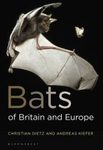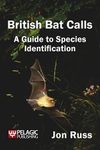About this book
This report describes the results of bat inventory fieldwork at Paracou, a lowland rainforest locality in northern French Guiana. Working within a 3-km radius over the course of 168 sampling days from 1991 to 1994, we captured 3126 bats, of which about 78% were taken in ground-level mistnets, 10% in mistnets suspended above ground level, and 12% at roosts. We identified a total of 78 species, including 10 emballonurids, 2 noctilionids, 1 mormoopid, 49 phyllostomids, 1 furipterid, 1 thyropterid, 5 vespertilionids, and 9 molossids. Among our taxonomic results, we describe a new species of Micronycteris (sensu stricto) to honor André Brosset, pioneering monographer of rainforest bat faunas in India, Africa, and South America. In addition, we report the first records of eight other species from French Guiana: Centronycteris maximiliani, Peropteryx kappleri, Saccopteryx gymnura, Micronycteris homezi, Micronycteris schmidtorum, Molossops paranus, Molossus sinaloae, and Promops centralis.
Most of these were previously known from Surinam, but the range extensions are significant for Saccopteryx gymnura (ca. 900 km), Micronycteris homezi (2200 km), and M. schmidtorum (1500 km). Altogether, the known bat fauna of French Guiana now consists of 102 species. The following significant taxonomic results are also reported herein. (1) Comparison of Paracou specimens referable to Peropteryx macrotis (Wagner) with the holotype of P. trinitatis Miller supports the conclusions of recent investigators that these taxa are separate species. (2) Morphological variation among specimens of small Choeroniscus from Paracou, together with examination of type material and a critical review of the literature, suggest that C. minor (Peters), C. intermedius (Allen and Chapman), and C. inca Thomas are conspecific; the oldest available name for the species is Peters'. (3) Glyphonycteris Thomas (including Barticonycteris Hill as a synonym), Micronycteris Gray (including Xenoctenes Miller as a synonym), and Trinycteris Sanborn are rediagnosed as distinct genera; Lampronycteris Sanborn and Neonycteris Sanborn, two other erstwhile subgenera of Micronycteris (sensu lato), should also be treated as full genera. (4) Micronycteris homezi Pirlot, based on a lost holotype and previously considered a nomen dubium, is redescribed and rediagnosed as a valid species. (5) Micronycteris megalotis (Gray) and M. microtis Miller are distinct species represented by sympatric collections from Paracou and other material similarly interpreted by recent investigators. (6) Mimon bennettii (Gray) and M. cozumelae Goldman are diagnosable as distinct species by consistent external and craniodental character differences. (7) Ectophylla H. Allen is rediagnosed to include Mesophylla Thomas in recognition of the sister-group relationship between E. alba H. Allen and E. macconnelli (Thomas). (8) The recent hypothesis that Sturnira lilium (E. Geoffroy) and S. luisi Davis are conspecific is rejected as implausible because of trenchant cranial character differences. (9) The Venezuelan and French Guianan specimens recently identified in the literature as Eptesicus andinus J.A. Allen are not conspecific with the holotype of that species; instead, examination of type specimens, other comparative material, and the primary literature suggests that this material is referable to E. chiriquinus Thomas. (10) All currently accepted synonymies for taxa included within Davis's (1966) andinus group of Eptesicus are apparently incorrect; in our view, E. andinus is a senior synonym of E. montosus Thomas and E. chiralensis Anthony, whereas E. chiriquinus is a senior synonym of E. inca Thomas. (11) We review the contents of Cynomops Thomas, currently ranked as a subgenus of Molossops Peters, and tabulate diagnostic characters for the four species we regard as valid: M. abrasus (Temminck), M. greenhalli (Goodwin), M. paranus (Thomas), and M. planirostris (Peters). (12) Molossus barnesi Thomas is a valid species readily distinguishable from both M. molossus (Pallas) and M. coibensis J.A. Allen.
Analyses of our sampling results indicate that (1) distinct sets of species are effectively sampled by different capture methods; (2) distinct sets of species inhabit different local habitats; and (3) increased sampling effort with any method generally results in more species, although the rate of accumulation declines with sample size (number of captures). Based on nonparametric statistical extrapolations, we estimate that the Paracou bat fauna probably consists of somewhere between 85 and 95 species; the more conservative richness estimator suggests that our inventory is perhaps about 90% complete. Judging from the known or inferred behaviors of the rare taxa (singletons and doubletons) in our data, most of the local species missing from this inventory are probably aerial insectivores, gleaning insectivores, or nectarivores. In terms of higher taxonomic composition, the bat fauna at Paracou is typical of those found throughout the humid Neotropical lowlands. A quantitative analysis of faunal similarity at the species level among 14 rainforest localities chosen as exemplars clusters the Paracou list with others previously reported from the Guiana subregion of Amazonia, next with lists from elsewhere in Amazonia, and lastly with Central American lists. Not surprisingly, pairwise similarity values show a positive correlation between faunal resemblance and geographic proximity within the Neotropical rainforest biome. Many (47%) of the bat species in the Paracou fauna are essentially pan-Neotropical in distribution and most of these are also known from habitats other than rainforest. The remaining species exhibit more restricted geographic distribution patterns, but true Amazonian endemics constitute only a minor fraction of the Paracou bat fauna.
Species richness comparisons among inventory sites are complicated by problems of inconsistent methodology, habitat representation, and sampling effort. For example, the apparently exceptional diversity of emballonurids, phyllostomines, and molossids in the Paracou fauna is plausibly explained by our intensive use of elevated netting and roost surveys, and by prolonged effort, all of which factors act to reduce the well-known capture bias of ground-level mistnets (which consistently undersample these taxa in the short term). However, the low richness of carolliines and stenodermatines at Paracou by comparison with most other Amazonian (especially western Amazonian) localities is apparently real. The only approximately valid statistical comparison of species richness that we can make between sites based on published capture-frequency data suggests an increase of approximately 50% in understory bats from eastern Central America to Amazonia, but the real or artifactual nature of this estimated difference remains to be evaluated.
A trophic classification of Paracou bats indicates that aerial insectivores are the most speciose feeding guild in the local fauna, followed by gleaning animalivores, frugivores, and nectarivores; omnivores, sanguivores, and piscivores are minor components. Patterns of differential habitat use among species within some feeding guilds can be inferred from our capture-frequency data, notably for aerial insectivores and frugivores. By contrast, gleaning animalivores appear to be largely restricted to primary forest, a puzzling phenomenon previously reported from other Neotropical rainforest localities. To facilitate future inventory fieldwork we provide (1) detailed descriptions of survey and capture methods, (2) illustrations of most local habitats recognized as distinct, (3) complete breakdowns of capture frequencies by method and habitat for each species, (4) photographs of numerous roosts at which bats were captured, and (5) descriptions and/or illustrations of useful characters for identifying species hitherto frequently confused in the field. Finally, we make recommendations for improving bat inventory efficiency, suggest minimal standards for reporting inventory data, urge the adoption of quantitative methods for intersite diversity comparisons, and comment on the prospects for rapid diversity assessment of rainforest bat faunas.
Customer Reviews









































